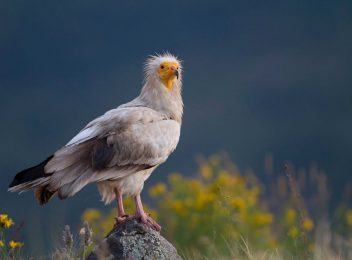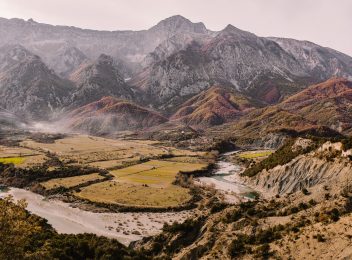Considering the relatively small geographical area it occupies, Albania is exceedingly rich in lakes, rivers and seas. With that in mind, it’s quite a catch for all things fly fishing. Increasingly popular but at present rarely practised in Albania, fly fishing is a specialised fishing technique which utilises an artificial insect or ‘fly’ as bait. Whilst fly fishing is very popular in the U.S, Albanians are only becoming familiar with this unique fishing style in recent years. Intriguingly enough, local fly fishing enthusiasts adhere to the theory that the journey towards capturing the fish is far more important than the catch itself. Something that separates fly fishing from the other disciplines of the sport.
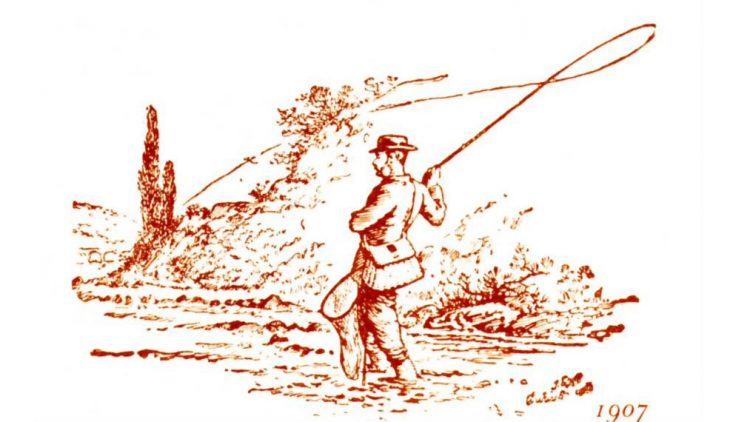
Source: simplyfy.it
The Origin and Birth of Fly Fishing
In order to fully understand how the practice of fly fishing began, we first have to explore its distant (although not geographical) historical roots. One of the first ever mentions of fly fishing can be found in the works of the 2nd century ancient Roman writer, Claudius Aelianus, entitled “On the Characteristics of Animals” (“De Natura Animalium”). In this book, the author gives a detailed overview of the then-innovative fishing methods created by Macedonians. Upon observing fish leaping over and above the water’s surface in attempts to prey upon low flying insects, the Macedonians imitated the afore mentioned insect’s behaviour and replicated these movements when casting their fishing lines. Henceforth, fly fishing was born.
Based upon this very early account, it confirms the notion that Albania resides closely to the region in which the birth of fly fishing took place. With that in mind, it is worth exploring just exactly where you can practice this age-old sport in modern Albania. One of the most seasoned fly fishing experts in Albania is Bujar Syla, from Mitrovica in Kosovo, Syla is something of an expert in both Albania and Kosovo’s vast bodies of water.
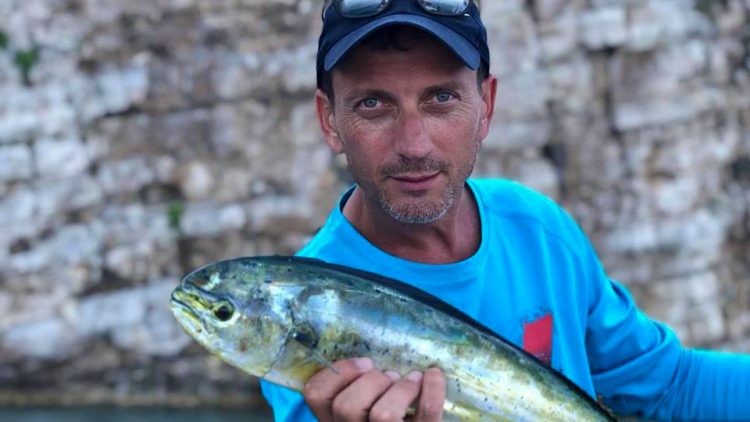
Bujar Syla and his trophy. Photo Courtesy: Bujar Syla.
From the Mouth of a local Fly Fishing Expert
Bujar began to practise fly fishing in Albania during the early 2000s, at a time when the country’s rugged yet beautiful nature was still relatively unexplored. These predominantly unchartered areas of Albania created vastly favourable conditions for fishermen, who could practice their sport pretty much uninterrupted by any disruptive human or industrial elements, in countless destinations.
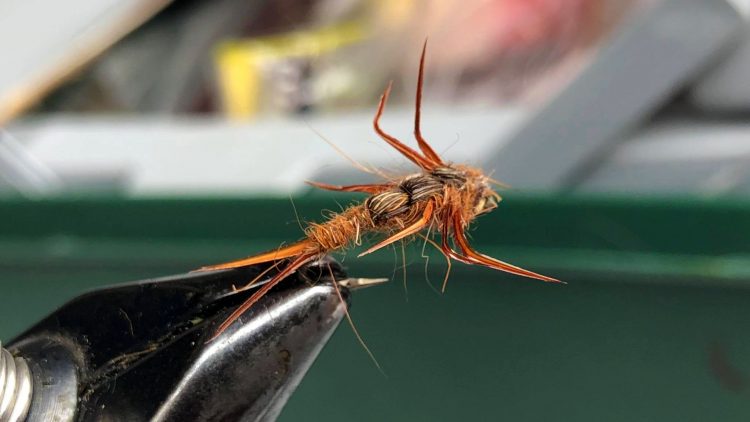
Artificial fly created by Bujar Syla. Photo Courtesy: Bujar Syla.
A multitude of Albanian rivers and other waterways have played host to Bujar’s fly fishing experience throughout the years, the Valbona River, the Tragjas region, and Lake Koman to name but a few. These locations are renowned for the speckled trout, a species of fish often captured using the unmistakeable fly fishing technique. Like most fishermen, fly fishing enthusiasts consider this sport a lifestyle and even a philosophy of life. They swear by the satisfaction one gains from being so close to nature as well as the beneficial patience and peacefulness fly fishing affords.
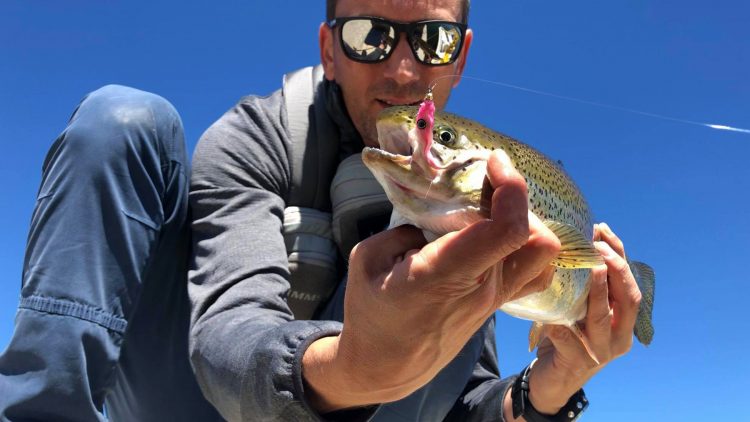
Bujar holding the rainbow trout, captured through fly fishing. Photo Courtesy: Bujar Syla.
Fly fishing can be defined by four techniques. The first is often known as the “surface fly” technique, in which the lightweight fly floats upon the surface water, goading the fish to jump and catch it. The “underwater fly” method involves using the artificial ‘fly’ in order to replicate the movements of a real insect underneath the surface. The “nymph” technique entails the fly sinking a little lower towards the fish, leaving the final method which is known as ‘spinning’.
Bujar, much like his fellow fly fishing experts, never opts to keep the captured fish, instead he immediately returns the animal to the water. From the construction of the artificial fly, leading up to the eventual release of the fish back into its natural habitat, the entire process of fly fishing adheres to a natural cycle. This is perhaps what led famous British author Izaak Walton to describe fly fishing as the “Contemplative Man’s Recreation”, back in the 17th century.
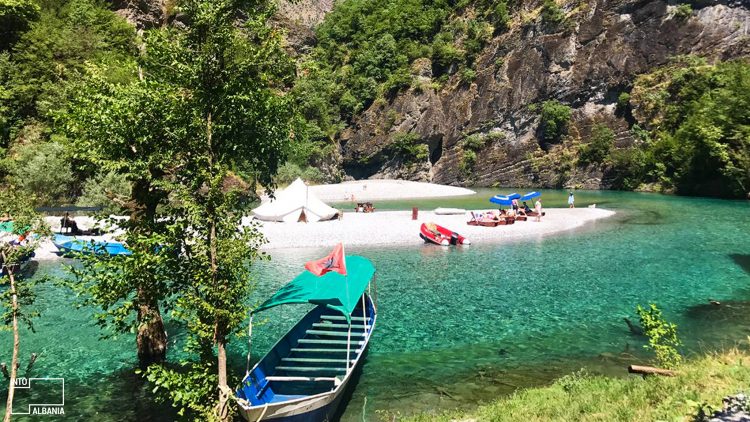
Shala River, photo by IntoAlbania.
Bujar regretfully admits that the recent construction of hydro-power plants has severely damaged the environment, and with it, the opportunities for fly fishing. For this reason, Bujar has resorted to other fishing methods which according to him, are more suitable given the current conditions in Albania. The fly fishing veteran Bujar concedes that the rivers and waters of Albania are not what they once were for the pastime, but insists that there are still plentiful opportunities to fly fish in the country.
The Best Spots for Fly Fishing in Albania
The North of Albania.
When it comes to fly fishing, the destination itself really determines the best time to go. Overall, the speckled trout is the most traditional fish of Albanian waters. You’ll most likely find it swimming amongst large schools in the summer months from June to August along the northern rivers of Albania such as Valbona, Shala, and Cemi. The optimum times to go fly fishing are either in the morning or during late evening. As a bonus these locations are also the most frequented areas of the entire country for mountain climbing and all kinds of mountainous tourism. So feel free to spend time enjoying the traditional and wonderfully picturesque villages like Theth (the Shale River), Valbona (the Valbona River), as well as the gorgeous surroundings of Kelmend (the Cemi River).
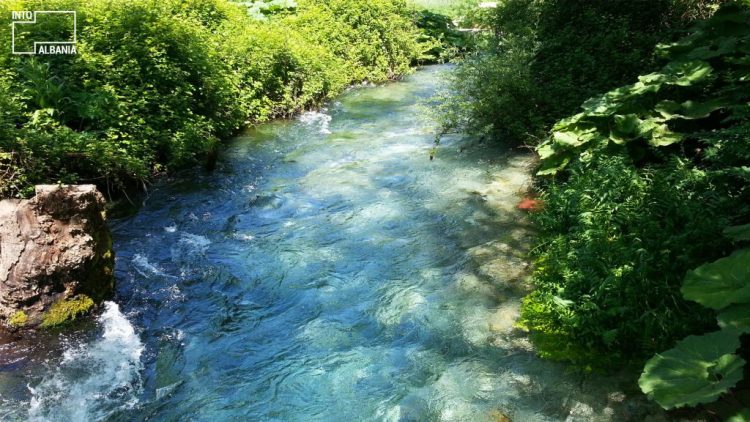
Valbona River, photo by IntoAlbania.
Central Albania
Not too far from Librazhd, the Shkumbin River is another idyllic spot for fly fishing. During the period of May through to July, a mass density of trout populates the river. Located just a ninety-minute drive from Tirana, Librazhd is perhaps the most convenient spot for those looking to depart from the capital as well as those time conscious fly fishers who would rather make a day trip.
The South of Albania.
Fly fishing in the summer months is also best spent in Tragjas. Close to Tragjas you can find the ancient city of Orikum which boasts a rather stunning beach (both of which are well worth a visit). The journey from Tirana to Tragjas takes approximately three and a half hours. Upon your arrival, just a few metres before you cross the bridge towards Orikum, keep an eye out for the turn to Tragjas village, which will take you directly to the river.
Last but certainly not least the last free-flowing wild river of Europe must be mentioned, the Vjosa residing in the southern region of Albania. It flows for a sizeable 270km and finally deposits into the Narta Lagoon (one of the richest lagoons in Albania in terms of biodiversity). A fly-fishing excursion along the Vjosa may be more time consuming, but your time spent is bound to be rewarded, and again, the best time to go is during the summer months. To reach the Vjosa River, follow the road to Gjirokastra, where the river begins as early as Tepelena. And we should note adding visits to Gjirokastra & Përmet would be greatly beneficial to your trip.
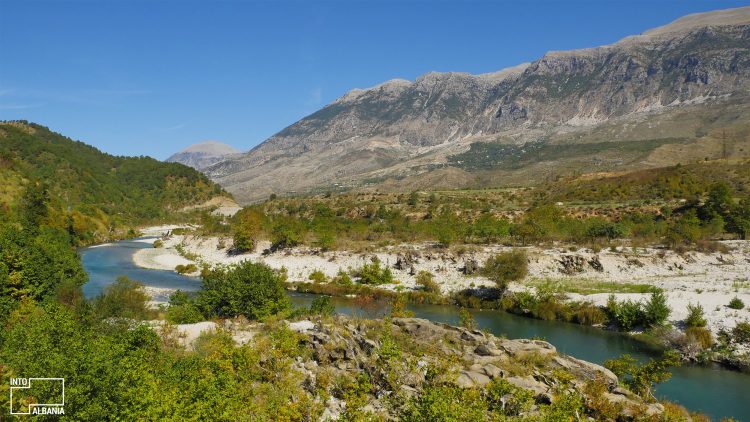
Vjosa River, near Gjirokastra. Photo by IntoAlbania
Fly Fishing at the Albanian Lakes
Fly fishing in Lake Koman, one of the largest and most beautiful in Albania, is ideal in the periods of March to June, and September to October. Whilst visiting the area, you may also choose to enjoy one of the most popular boat trips in Europe, the ferry along Lake Koman. Click here for more detailed information and for the ferry ride schedule. The trip takes around three hours to get to Koman Lake from Tirana and only two hours from Shkodra. Also keep in mind Ohrid and the Lura Lakes if you’re planning to catch a trip to Albania, there is most certainly some fantastic fly fishing to be had in both locations.








